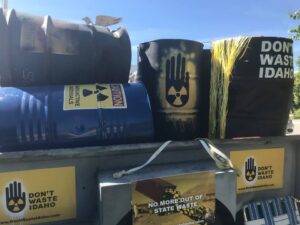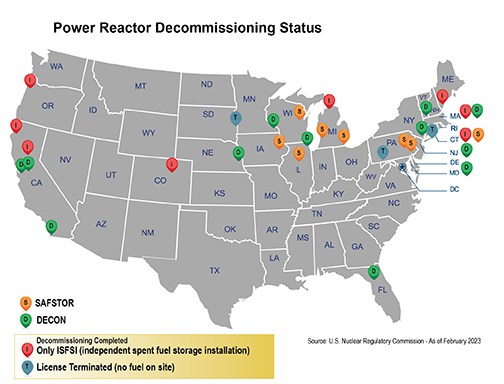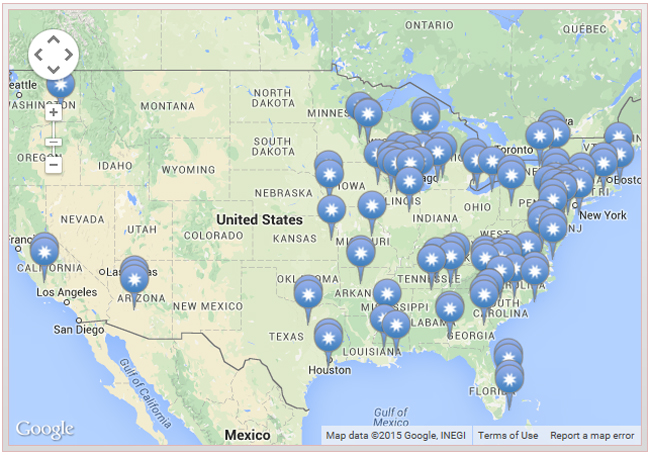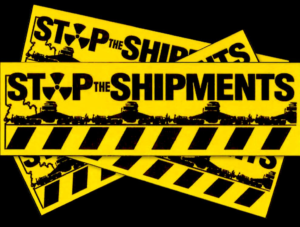
Another Environmental Injustice
Consolidated (or Centralized) “Interim” Storage (CIS) are proposed facilities that would receive high-level commercial nuclear power waste “temporarily” before being shipped to a (currently non-existent) permanent repository. New Mexico is getting a lesson in how the process works. The Nuclear Regulatory Commission (NRC) recently decided New Mexico would host the nation’s high-level commercial radioactive waste, but state legislators and many public interest groups are saying no. New Mexico Gov. Michelle Lujan Grisham said that New Mexico is willing to help with our nation’s nuclear waste problem adding, “But we won’t be burdened by going it alone unequivocally.”
New Mexico and other western states have sacrificed plenty for the nation’s nuclear “progress” from weapons testing to uranium mining and milling. The United States tested the first atomic bomb in New Mexico and continued in Nevada, where the Western Shoshone were bombed repeatedly during U.S. nuclear weapons testing between 1951 and 1992. In Nevada alone, there were 928 tests. The Diné on Navajo Nation and other frontline communities across the West continue to suffer from uranium mining and milling effects. Most nuclear reactors are east of the Rockies, while the burden of uranium mining, milling, and waste falls on the shoulders of Westerners and, tragically, future generations.
While the NRC has selected New Mexico as our nation’s “temporary” nuclear waste dump, New Mexico isn’t taking it lying down; other communities should support them.
It’s Our Problem, Too
Transportation is one big problem with CIS. If necessary, radioactive waste should only be moved once to a safer location as close to where the waste was generated as possible. CIS would require that nuclear waste travel at least twice, once to the “interim” facility and later to a currently non-existent final repository. The more toxic waste travels around, the more risk our communities incur.
Repurposing nuclear sites for public use is dangerous and is another greenwashing method. Groups like the Rocky Mountain Peace and Justice Center are fighting efforts to turn Rocky Flats, a plutonium-contaminated former nuclear weapons facility in Colorado, into a mountain bike park. The Department of Energy Office of Nuclear Energy website states, “At present, there are 13 different shutdown reactor sites in the United States where removal of the remaining spent nuclear fuel could release the sites for other uses, representing significant progress in the Department’s nuclear waste management mission.” If this is the mission, it seems prioritizing community health is missing.

Snake River Alliance statement on Consolidated "Interim" Storage
The Snake River Alliance, Idaho’s Nuclear Watchdog, diametrically opposes implementing an “interim” waste storage site in New Mexico. The people of New Mexico have clearly and repeatedly rejected calls for a permanent repository in their state, and “interim” storage facilities run the real risk of becoming permanent. If this planned transport comes to pass, this will become everyone’s problem as high-level radioactive waste would be transported through communities on truck, rail, and barge from all over the U.S. to New Mexico. Our leaders need to protect the people of New Mexico (and the country) and stand up to the federal government by deeming the license violates the Nuclear Waste Policy Act.
To polluters: Stop creating nuclear waste, and minimize the risk presented by current radioactive waste by storing it as safely and closely to its origin point as possible.

These nuclear reactors are in various stages of closing or “decommissioning” and, with no permanent solution for the radioactive waste, we have a waste problem.

The points shown here are currently operating nuclear power reactors. New Mexico has no reactors but the NRC is planning on transporting radioactive waste from all across the nation to New Mexico.
If the CIS facility is built, radioactive waste will travel from the commercial nuclear power plants by railroad, truck, and barge through communities across the country to New Mexico. The NRC has yet to release the proposed transportation routes despite requests, likely due to security threats and potential community concerns or pushback. From what we do know about our transportation system, it is not ready for radioactive waste shipments.
The Bureau of Transportation Statistics reported 54,539 train derailments between 1990 and 2021, or about 1,704 annually. While not all rail accidents are like the toxic catastrophe we saw in East Palestine, OH, the possibility of a “Mobile Chernobyl” is too big of a risk for communities to accept. Thousands of shipments of radioactive waste not only increase the probability of an accident but will also degrade our aging roads and railways. In a May 11 press release Kevin Kamps, Radioactive Waste Specialist with Beyond Nuclear, said, “Even if our nation’s infrastructure gets renovated someday, the shipping containers themselves will remain vulnerable to severe accidents and terrorist attacks. They could release catastrophic amounts of hazardous radioactivity, possibly in densely populated urban areas.”

Start Justice for Communities
We can take some easy steps to protect our communities. Tell your leaders that you do not support “Consolidated Interim Storage” facilities and oppose transporting radioactive waste through communities to New Mexico. Find your leaders in Congress at the links below and how to contact them:
You can also write op-eds or letters to the editor, use social media to share information, and support nonprofits that work on nuclear waste issues. Make sure to sign up for our action alerts and volunteer opportunities for workshops, events and more happening this year.
